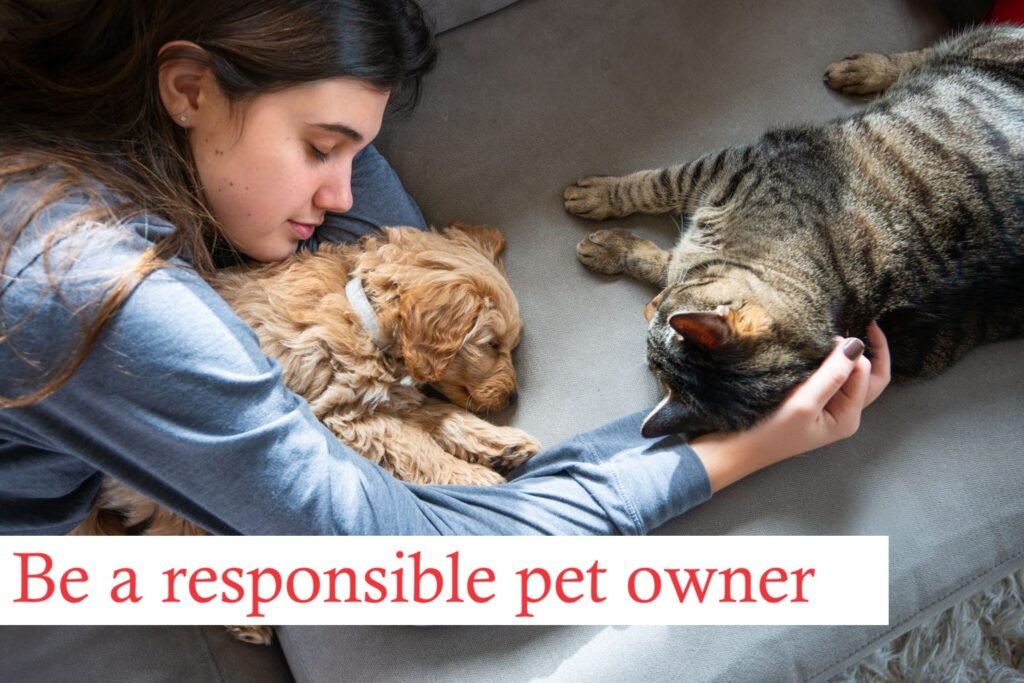Pets bring a lot of happiness and love into our lives. Whether it’s a playful dog, a purring cat, or a cute rabbit, pets quickly become part of the family. But if you start sneezing, coughing, or getting itchy eyes whenever you’re around your pet, it can be hard to enjoy their company.
The good news is that having a pet allergy doesn’t mean you have to give up your furry friend. With some easy changes and a little extra care, you can manage your allergies and keep your home comfortable and sneeze-free. Let’s talk about why pet allergies happen and what you can do to make life with your pet easier.
Why Do Pet Allergies Happen?
Pet allergies happen when your body reacts to tiny proteins found in an animal’s skin (dander), saliva, or urine. These proteins can float in the air, stick to furniture, and get on your clothes. For some people, being around these proteins can cause symptoms like sneezing, a runny nose, or itchy eyes.
Dogs and cats are the most common pets that cause allergies, but other animals like rabbits, hamsters, guinea pigs, and birds can also cause allergic reactions. Sometimes, you don’t even need to be near the pet—just being around the places they’ve been, like the couch or carpet, can be enough to trigger symptoms.
What Are the Symptoms of Pet Allergies?
Do you have a pet allergy? Here are some common signs:
- Sneezing: If you’re sneezing a lot, especially when your pet is around, it might be an allergy.
- Runny or Stuffy Nose: A nose that’s always running or feels blocked can be a symptom.
- Itchy, Watery Eyes: Your eyes might feel itchy, red, or watery when you’re near your pet.
- Coughing or Wheezing: Pet allergies can sometimes make asthma worse, leading to coughing or wheezing.
- Skin Reactions: Some people might get a rash or hives after touching their pet.
If these symptoms sound familiar, especially if they get worse when you’re around your pet, you might have a pet allergy. It’s a good idea to talk to a doctor to make sure.
Are There Pets That Cause Fewer Allergies?
You might have heard of “hypoallergenic” pets. These are pets that are less likely to cause allergic reactions. While no pet is completely allergy-free, some pets shed less hair and dander, which means fewer allergens floating around your home.
Here are some pets that might be better if you have allergies:
Dogs:
-
- Poodles: Poodles have curly hair that doesn’t shed much, making them a good choice for people with allergies.
- Bichon Frises: These small dogs are known for their fluffy coats that shed very little.
- Portuguese Water Dogs: These dogs have curly, non-shedding coats, which means less dander in your home.
Cats:
-
-
- Sphynx: The Sphynx cat doesn’t have fur, so you won’t have to worry about shedding, but they still produce some dander.
- Balinese: This breed sheds less than other cats, which can make your allergies easier.
- Devon Rex: With short, curly fur, Devon Rex cats shed less, which means fewer allergens.
-
Other Pets:
-
- Fish: Fish don’t have fur or dander, so they’re a great choice for people with allergies.
- Reptiles: Snakes, lizards, and turtles don’t have fur, so they’re less likely to cause allergic reactions.
- Rabbits: Some rabbits, like the Rex breed, have short, soft fur that sheds less and might be easier for those with allergies.
Remember, everyone’s allergies are different. Even with hypoallergenic pets, you might still have some symptoms, so it’s a good idea to spend time around the pet you’re considering before bringing them home.
Reducing Pet Allergens in Your Home
Even if you have a pet that’s less likely to trigger your allergies, it’s important to take steps to reduce allergens in your home. Here’s how you can keep allergens under control:
Keep Your Home Clean
Keeping your home clean is one of the best ways to manage pet allergies. Here’s how:
- Vacuum Often: Pet dander can get into carpets, rugs, and furniture. To keep it under control, vacuum regularly. Use a vacuum with a HEPA filter, which is designed to trap tiny particles like dander, dust, and pollen.
- Wash Pet Bedding: Your pet’s bed can hold a lot of dander. Washing their bedding in hot water once a week can help remove allergens. If you can, use synthetic fabrics for pet bedding, as these materials trap less dander.
- Wipe Surfaces: Dander doesn’t just stay on the floor—it can settle on walls, floors, and furniture, too. To pick up dander more effectively, wipe these surfaces with a damp cloth.
- Reduce Clutter: Clutter can trap pet dander, making it harder to clean your home thoroughly. Try to keep your home organized, especially in areas where your pet spends the most time. This will make cleaning easier and help reduce allergens.
Improve Air Quality
Improving the air in your home can help reduce allergens and make breathing easier:
- Air Purifiers: An air purifier with a HEPA filter can help remove allergens from the air, making it easier to breathe. Place air purifiers in the rooms where you spend the most time, like your living room and bedroom.
- Open Windows: Letting in fresh air can help reduce the concentration of indoor allergens. When the weather is nice, open your windows to let in some fresh air.
- Control Humidity: Dust mites, which can also trigger allergies, love humid environments. To keep them under control, use a dehumidifier to keep your home’s humidity level around 40-50%.
Groom Your Pet Regularly
Taking care of your pet’s grooming can help reduce allergens:
- Bathing: Regular baths can help wash away dander and other allergens from your pet’s fur. Use a gentle, hypoallergenic shampoo to avoid irritating your pet’s skin. Bathing once a month is a good starting point, but some pets may need more or less frequent baths.
- Brushing: Brushing your pet’s fur can help remove loose hair and dander before they can spread around your home. If possible, brush your pet outside to prevent allergens from being released indoors. If you have to brush them inside, do it in a well-ventilated area and clean up any hair or dander right after.
- Create Pet-Free Zones: To give yourself a break from allergens, create areas in your home where your pet isn’t allowed. For example, you might want to keep your bedroom pet-free, so you have a place to sleep without being exposed to dander. Keep these areas clean by vacuuming and dusting regularly.
Medical Solutions for Pet Allergies
Even with the best cleaning and grooming habits, you might still have some allergy symptoms. Luckily, several medical options can help:
Over-the-Counter Medicines
Over-the-counter medicines can be very helpful for mild allergies. Here are some options:
- Cetirizine (Zyrtec) is a popular antihistamine that can help reduce sneezing, itching, and a runny nose.
- Loratadine (Claritin): Claritin is another effective antihistamine that doesn’t cause drowsiness.
- Fexofenadine (Allegra): Allegra is a non-drowsy antihistamine that can help relieve allergy symptoms.
These medicines are available at most drugstores and can be taken as needed to manage symptoms. Read the label and follow the recommended dosage.
Prescription Treatments
If your allergies are more severe or if over-the-counter medicines aren’t enough, a doctor might recommend prescription treatments. Here are some options:
- Allergy Shots (Immunotherapy): Allergy shots can help reduce your sensitivity to allergens over time. This treatment involves getting regular injections of small amounts of the allergen (like pet dander) to help your immune system get used to it. Over time, this can help reduce your allergy symptoms.
- Nasal Sprays: Prescription nasal sprays, like corticosteroids, can help reduce inflammation in your nose and relieve symptoms like a runny nose and congestion.
- Oral Medications: In some cases, a doctor might prescribe stronger oral medications to help manage severe allergies.
Always talk to your doctor before starting any new treatment to ensure it is the right option for you.
Conclusion
Dealing with pet allergies can be tough, but it doesn’t mean you have to say goodbye to your furry friend. By keeping your home clean, improving air quality, choosing the right pet, and using medicines if needed, you can manage your allergies and enjoy a comfortable, sneeze-free home.
Everyone’s experience with pet allergies is different, so it might take some time to find the right one.



